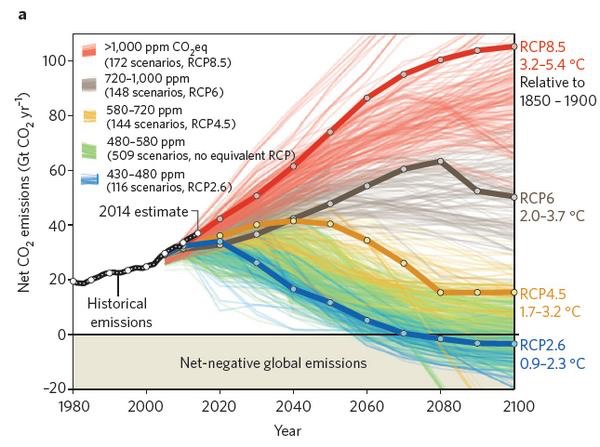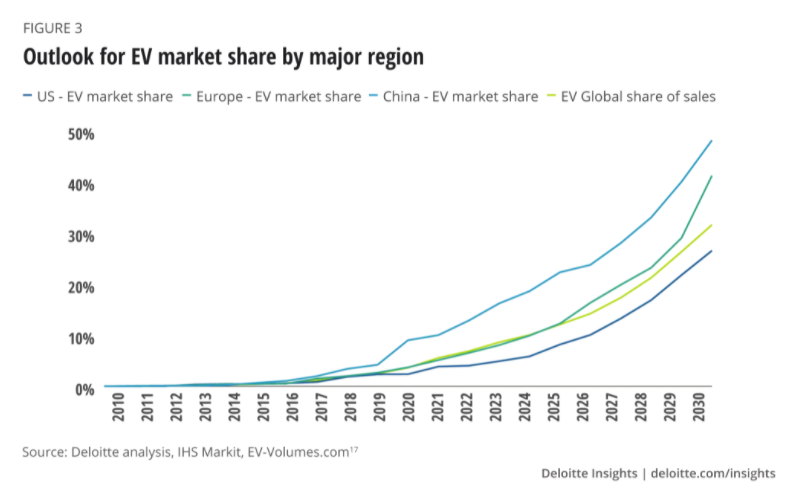What is decarbonisation, and why do we urgently need it?
In December 2015, the historic Paris Agreement was adopted by consensus by all members of the United Nations Framework Convention on Climate Change (UNFCCC).
At its core, decarbonising is about safeguarding our planet and all forms of life on it. This means that human activities need to operate within sustainable limits to preserve the Earth’s ecosystem.
Of course, this only works when countries work together.
To date, 197 countries have agreed to gradually reduce the use of fossil fuels and CO2 emissions to reach net carbon neutrality by 2050 and keep global warming below 2 °C by the year 2100.
The goals are admirable, but the solutions are often complex.
In this article, we’ll explore:
- What is decarbonisation?
- How can we superpower the transition with renewable energy sources?
- Is the transport industry leading the way?
What is decarbonisation?
Unfortunately, the Climate Action Tracker released in December 2023 reveals that current global pledges are insufficient, and the 1.5°C target could be slipping through our fingers. Largely because of dependence on fossil fuels.
The report says:
“To nearly halve GHG emissions by 2030 and reach net-zero CO2 emissions by mid-century, transformational changes must accelerate across the world’s highest-emitting sectors—power, buildings, industry, transport, forests and land, and food and agriculture.”
Having said that, all hope isn’t lost.
Each industry needs to take collective action and invest in innovative sustainable technology, phasing out carbon-heavy operations, and lobby governments for more pro-decarbonising policies. We need to champion energy efficiency.
To keep the global temperature within acceptable levels, our only chance is to become carbon neutral with deep decarbonisation initiatives.
Decarbonisation meaning
Decarbonisation (also referred to as decarbonization across the Atlantic) refers to the process of reducing carbon dioxide (CO2) emissions resulting from human activity in the atmosphere.
High levels of carbon dioxide co2, a greenhouse gas, in our atmosphere are incredibly harmful to the Earth as they absorb and radiate heat, leading to increased temperatures.
The current (and optimistic) objective of decarbonisation is to, eventually, reduce carbon dioxide emissions, so that we aren’t contributing to unsustainable temperature increases.
To achieve deep decarbonisation, we need to rethink how we produce and consume energy and operate a radical switch to renewables and low-carbon energy sources. In essence, we need to monitor our carbon footprint.
In practice, getting to zero net emissions requires switching to clean energy sources and shifting from fossil fuels to electricity.
Why is decarbonising (so) urgent?
According to the World Economic Forum, full decarbonisation of our energy systems is the main solution to climate stabilisation.
“The industrial sector is directly responsible for roughly 40% of global energy consumption and contributes to 25% of greenhouse gas (GHGs) emissions.”
Now, we are already lagging behind targets set in 2015, and our current policies would, in the best-case scenario, lead to an increase of 2.1 °C and, in the worst-case scenario, to a rise of 3.9 °C.
This situation is quite alarming.
To give a bit of context, the last time the global average temperature was 2 °C warmer, the average sea level was over 6 metres higher than today.
With a 3 °C increase (the current average we’re heading towards if we don’t change our ways), cities like Miami, Shanghai, Osaka or Rio de Janeiro would sink underwater. Additionally, a total of 275 million people worldwide would need to relocate and escape the flood.
But it’s not only flooding that threatens the planet; increased temperatures cause unpredictable weather in all forms, including longer wildfire seasons, more droughts, and an increase in hurricane intensity.
There are (still) multiple scenarios
The International Panel of Climate Change has generated 5 RCP (Representative Concentration Pathway) scenarios to anticipate the effects of our carbon emission on Earth’s global temperatures:
- RCP8.5: This scenario depicts the likely outcome if we don’t make efforts to cut greenhouse gas emissions.
- RCP6 and RCP4.5: those two scenarios describe what could happen if we cannot act fast enough. According to the latest reports, we currently sit in between scenarios 6 and 4.5.
RCP2.6: This is the only scenario where Paris Agreement goals are reached. Following this path means getting net CO2 emissions to zero, or below zero, shortly after 2050.

Picture: IPCC's Representative concentration pathways (RCP) presenting four scenarios for net CO2 emissions.
While the odds don’t look great, we still have a chance to limit global warming to 2 °C (or lower) by 2100: Deep decarbonisation.
The UK’s public sector decarbonisation scheme
As mentioned above, some important methods of decarbonising are by introducing policy, legislation, and government schemes.
These are a few ways governments incentivise sectors to decarbonise.
An example of this is the UK's Public Sector Decarbonisation Scheme, which aims to reduce emissions from public sector buildings by 75% by 2037.
To do this, they've introduced financial aid of over £1.425 billion of grant funding over the financial years 2022 to 2023 and 2025 to 2026 - enabling the support of up to 30,000 jobs in the low carbon and energy efficiency sectors.
The UK government also provides a Public Sector Low Carbon Skills Fund, which can be used to educate and lay the foundations of decarbonisation planning.
What is needed for the transition?
Of course, we cannot change the old ways of producing and consuming energy overnight. However, the emergency situation mandates that we dramatically accelerate our zero carbon emission transition.
First, we need to identify specific areas that are crucial for creating change and monitor our energy consumption in each. Climate Action Tracker break this into 8 categories:
- Power
- Buildings
- Industry
- Transport
- Forests and land
- Food and agriculture
- Technologic
- Finance
Transport specifically, as reported in the State of Climate Action, accounted for about 14% of direct global GHG emissions in 2021 (Minx et al. 2021; European Commission and JRC 2022).
Yet arguably this area shows some of the greatest promise for deep decarbonisation - Virta is helping make this a reality by supporting the transition to EV with smart energy management infrastructure.
Industries can use smart methods of carbon capture and storage and invest in effective green technologies like electric vehicles to combat the greenhouse effect worsened by human activity.
Decarbonising transport
Decarbonising transport largely requires a transition to electric vehicles (EVs).
“On the roads, fossil-fueled vehicles will need to be electrified, and fossil-fueled cars will need to be replaced, right-sized, and diminished in number.” says the report.
Electricity is a smart replacement for traditional fossil fuels, as it can be farmed sustainably from wind, solar or other methods. Innovative work is also being completed in the battery sector so that renewable energy can be stored in the long term and utilised in the grid when needed.
And EVs aren't only including lightweight passenger cars, van and lorry fleets; even some boats are being electrified to support operational transportation.
EVs are supporting the grid
The argument for electronically-charged vehicles is simple enough. But the innovation doesn’t end there.
With the use of Smart EV charging infrastructures and new technologies like V2G (vehicle-to-grid), EVs can support national grids, which will face increasing pressure from the transition to electric.
Will there be enough electric vehicles to support our energy system? Yes. By 2030, Deloitte expects that EVs will account for 32 % of the total market share for new car sales worldwide.

In Europe alone, we expect EV sales to account for over 40% of new car sales by 2030.
The future looks optimistic for EV sales, as shown in the State of Climate Action report below, but we also need the infrastructure to support them.
Be part of the solution: Invest in smart EV charging
Of course, electric transportation is merely one piece of a complex puzzle, but we need it to succeed in this transition.
The three pillars of electric decarbonisation could look like - electrification, decarbonisation of electricity and energy efficiency - these concepts all intertwine and support each other.
We at Virta find pride in future-proofing the future. Learn more about our Smart EV Charging services and contribute to building a safer and greener tomorrow through e-mobility.
New content alerts
You may also like
These related stories
/two-men-bridge-polluted-air-smog.webp?width=1920&height=1080&name=two-men-bridge-polluted-air-smog.webp)
Electric cars & pollution: facts and figures
/ev-industry-growth-concept-graphic.webp?width=1920&height=1080&name=ev-industry-growth-concept-graphic.webp)
The state of EV charging infrastructure in Europe by 2030
/view-from-inside-a-car-with-an-open-door-showing-a-man-charging-an-ev.webp?width=1920&height=1080&name=view-from-inside-a-car-with-an-open-door-showing-a-man-charging-an-ev.webp)
What is the UK ZEV mandate: Is it good for business?
/woman-charging-ev-wind-turbine-blue-background.webp?width=1920&height=1080&name=woman-charging-ev-wind-turbine-blue-background.webp)